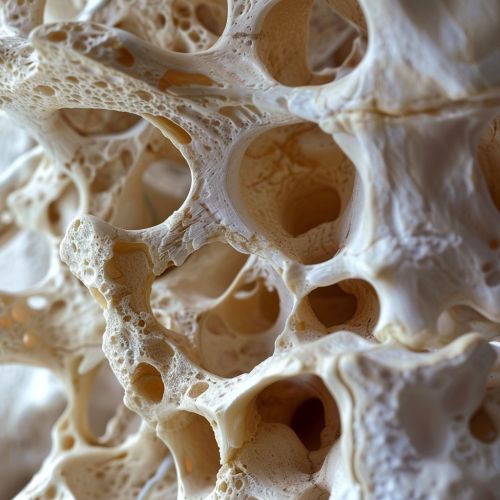Osteoporosis
Introduction
Osteoporosis is a systemic bone disease characterized by low bone mass and deterioration of bone tissue, leading to increased bone fragility and susceptibility to fractures. The term "osteoporosis" is derived from the Greek words "osteon" (bone) and "poros" (passage), signifying the porous nature of severely osteoporotic bones.
Epidemiology
Epidemiological studies indicate that osteoporosis is a major public health concern, affecting millions of people worldwide. It is more prevalent in women, particularly postmenopausal women, but can also affect men. The incidence of osteoporosis increases with age, making it a significant health issue in aging populations.


Pathophysiology
The pathophysiology of osteoporosis involves an imbalance in the normal processes of bone formation and bone resorption. Under normal circumstances, these processes are tightly regulated by various hormones, including estrogen, testosterone, parathyroid hormone, and vitamin D. In osteoporosis, the rate of bone resorption exceeds the rate of bone formation, leading to a net loss of bone mass.
Risk Factors
Numerous risk factors contribute to the development of osteoporosis. These can be divided into modifiable and non-modifiable risk factors. Non-modifiable risk factors include age, female gender, family history of osteoporosis, and certain genetic disorders. Modifiable risk factors include dietary factors (such as low calcium intake), lifestyle factors (such as physical inactivity, smoking, and excessive alcohol consumption), and certain medical conditions and medications.
Clinical Presentation
Osteoporosis is often termed a "silent disease" because it can progress without symptoms until a fracture occurs. Fractures most commonly occur in the hip, spine, and wrist, but can occur in any bone. In severe cases, fractures can occur with minimal trauma, such as from a minor fall or even from normal daily activities.
Diagnosis
The diagnosis of osteoporosis is typically made using dual-energy x-ray absorptiometry (DXA), a type of imaging study that measures bone mineral density (BMD). The World Health Organization (WHO) has established diagnostic criteria for osteoporosis based on BMD measurements.
Treatment
The treatment of osteoporosis involves a combination of lifestyle modifications and pharmacological therapies. Lifestyle modifications include dietary changes (such as increasing calcium and vitamin D intake), regular weight-bearing exercise, smoking cessation, and limiting alcohol consumption. Pharmacological therapies include bisphosphonates, selective estrogen receptor modulators (SERMs), and other medications.
Prevention
Prevention strategies for osteoporosis focus on optimizing bone health throughout life. This includes adequate intake of calcium and vitamin D, regular weight-bearing exercise, and avoidance of risk factors such as smoking and excessive alcohol consumption.
Prognosis
The prognosis for individuals with osteoporosis depends on several factors, including the severity of bone loss, the presence of other health conditions, and the individual's age and overall health status. With appropriate treatment and lifestyle modifications, many individuals with osteoporosis can lead active, healthy lives.
